Raised bed gardens are great for many reasons.
- If you have issues with bending or crouching, they are a lot easier to work in.
- Weed issues are easier to manage in raised beds.
- Growing in raised beds is the ideal solution if you don’t have good ground soil for growing.
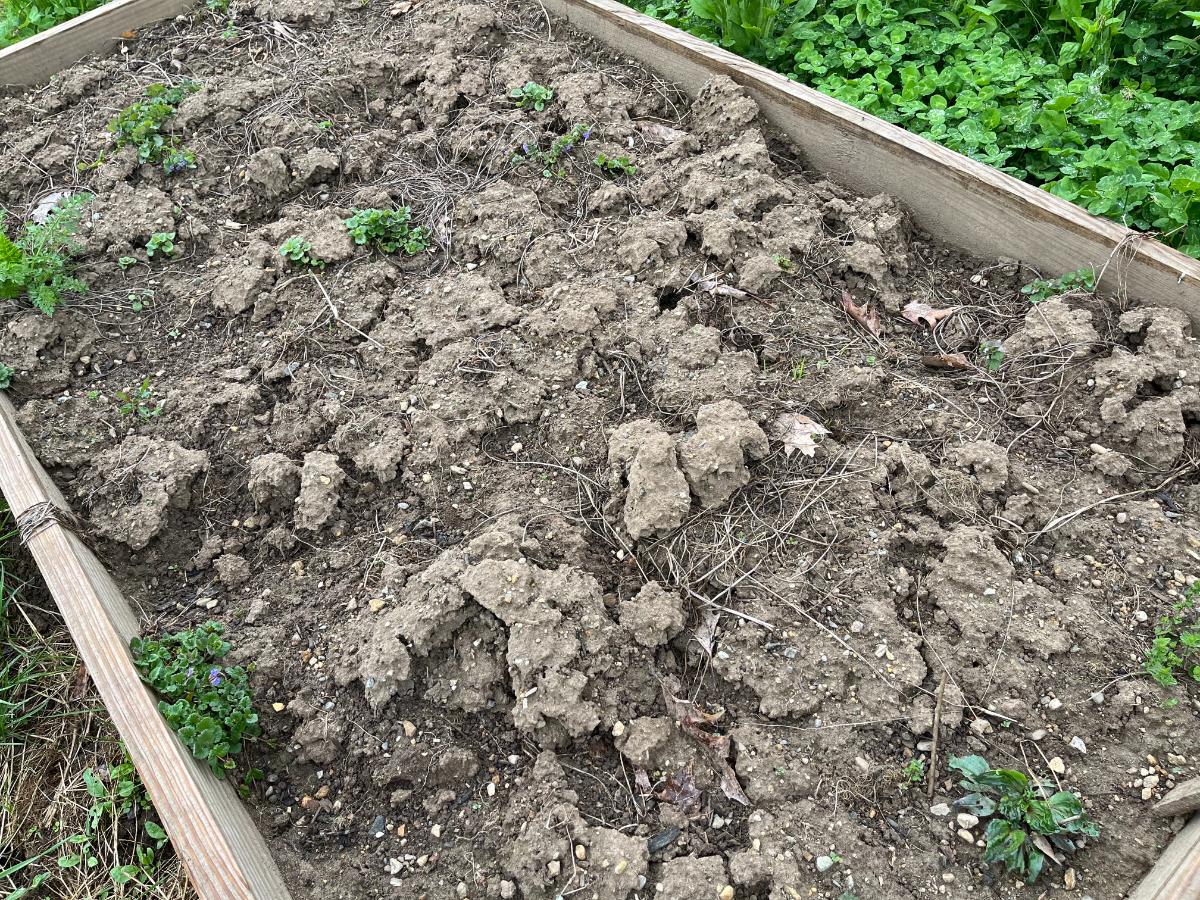
The biggest problem with building raised garden beds is that they are expensive to fill. Quality soil doesn't come cheap, and raised beds need a lot of soil to fill them. If you don’t want to (or can’t) bend to the garden, you’ll want taller raised beds of at least two to three feet high – and that takes a lot of good dirt!
Jump to:
- Good Ways to Fill Raised Beds on the Cheap (or Free!)
- 1. Cardboard (and Newspaper)
- 2. Dead Trees, Logs, or Old Cordwood
- 3. Branches
- 4. Leaves
- 5. Yard Waste/Cleanup
- 6. Plant Remnants
- 7. Compost
- 8. Wood Chip
- 9. Straw, Mulch Hay, and Old Garden Mulches
- 10. Old, Used Potting Soil
- Other Home, Yard, and Garden Materials that Make Good Bed Fillers:
- Tips for Filling Raised Beds with Little or No Money
Good Ways to Fill Raised Beds on the Cheap (or Free!)
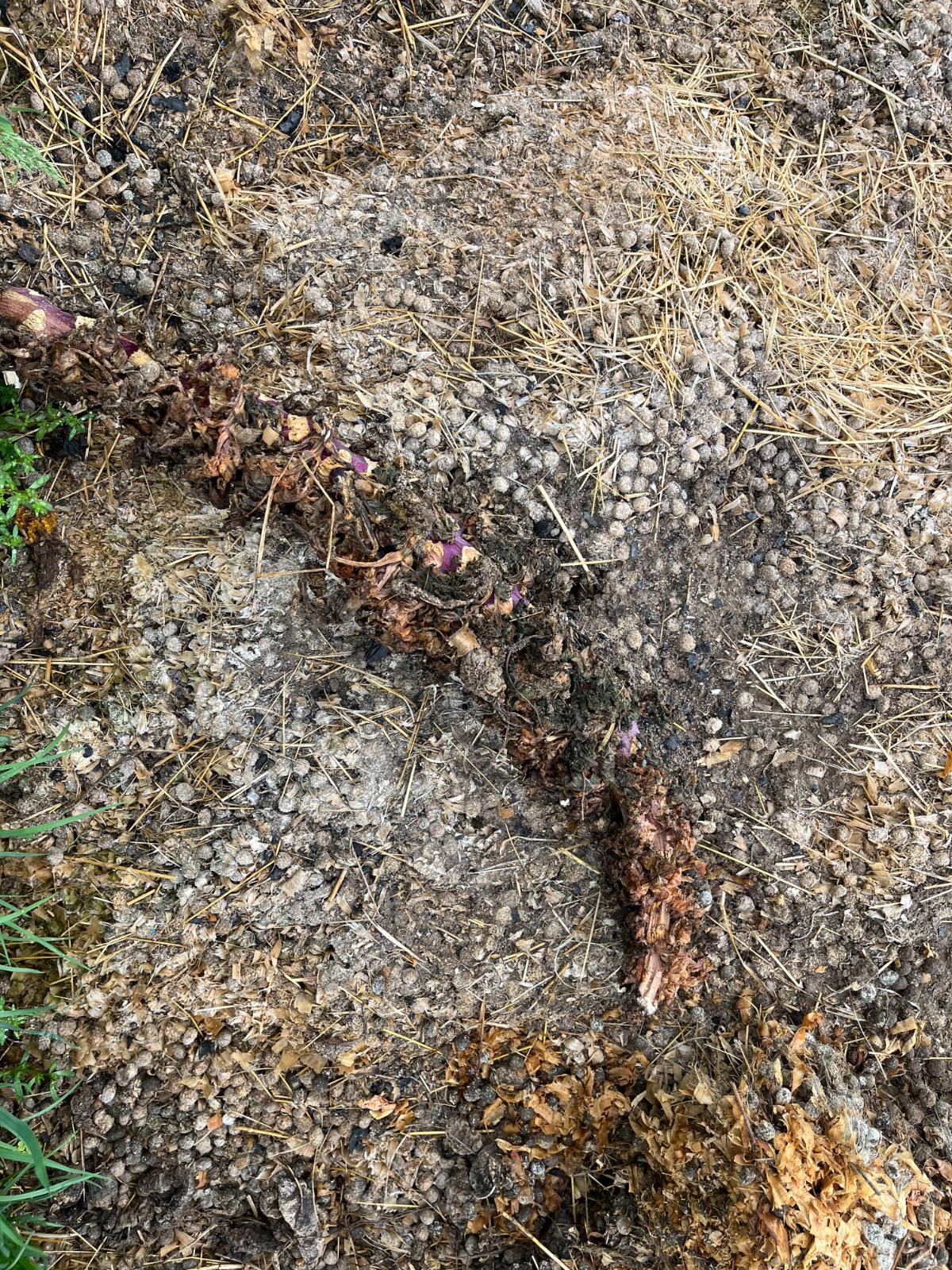
Raised beds don’t really need three feet of soil for growing in. Twelve to 18 inches of actual soil will do nicely. You can use other organic* materials to take up the space in the bottom, and then add a top layer of soil – anywhere from 12 to 24+ inches.
Fortunately for most gardeners, free or cheap organic materials are all around us. You just have to look and realize what you have available in your own home or yard!
*Note that when we say organic, we mean materials that are organic in nature and that which will break down. In this case, it doesn’t necessarily mean organic, as in chemical-free; that choice is yours to make.
1. Cardboard (and Newspaper)
Cardboard and newspaper are good first layers. You can lay them along the bottom of your raised bed to block weeds and begin filling your trench. Granted, they aren’t the biggest of space-takers, but they do help stop grasses and weeds from coming through your soil.
You can also shred either of these to mix in with other layers, compost, or soil, which will help bulk up the quantity of those materials and fill some space. Shredding also helps cardboard and paper products to break down more quickly.
When using cardboard or newspaper, remove all plastic tape and shiny labels, and follow the guidelines for safe use of cardboard and paper products in the garden. Never use coated or glossy cardboard, paper, or laminated products.
There is some controversy over using cardboard and newspaper in food-producing gardens, but the USDA does consider it a safe practice for organic growers if glossy pages, tapes, etc. and color labels are removed.
2. Dead Trees, Logs, or Old Cordwood

One of the best bottom layers after your weed/grass barrier is logs, chunks of cordwood, fallen tree branches, dead trees (or cut-up pieces), or old campfire wood.
Old and rotting wood is best because it has already started the decomposition process (which eventually will turn it into hummusy mulch or compost, essentially). Wood that seems soft and spongelike (“punky,” as many loggers would call it) is perfect.
The soft, punky wood acts as a home for beneficial microbes and acts like a sponge, soaking up and then slowly releasing water. This helps to maintain a good moisture balance in your raised beds.
Any wood can be used, even if it is freshly cut. The more solid and fresher the wood, the longer it will take to break down (and it will be a while before it has that sponge-like moisture-moderating quality to it). Most people don’t like to use wood that is good for use in burning, but if you have wood and you don’t want to burn it, there’s no reason not to use it in your beds.
This is a great way to use up the leftovers of last year’s wood and replace it with something better for burning.
3. Branches
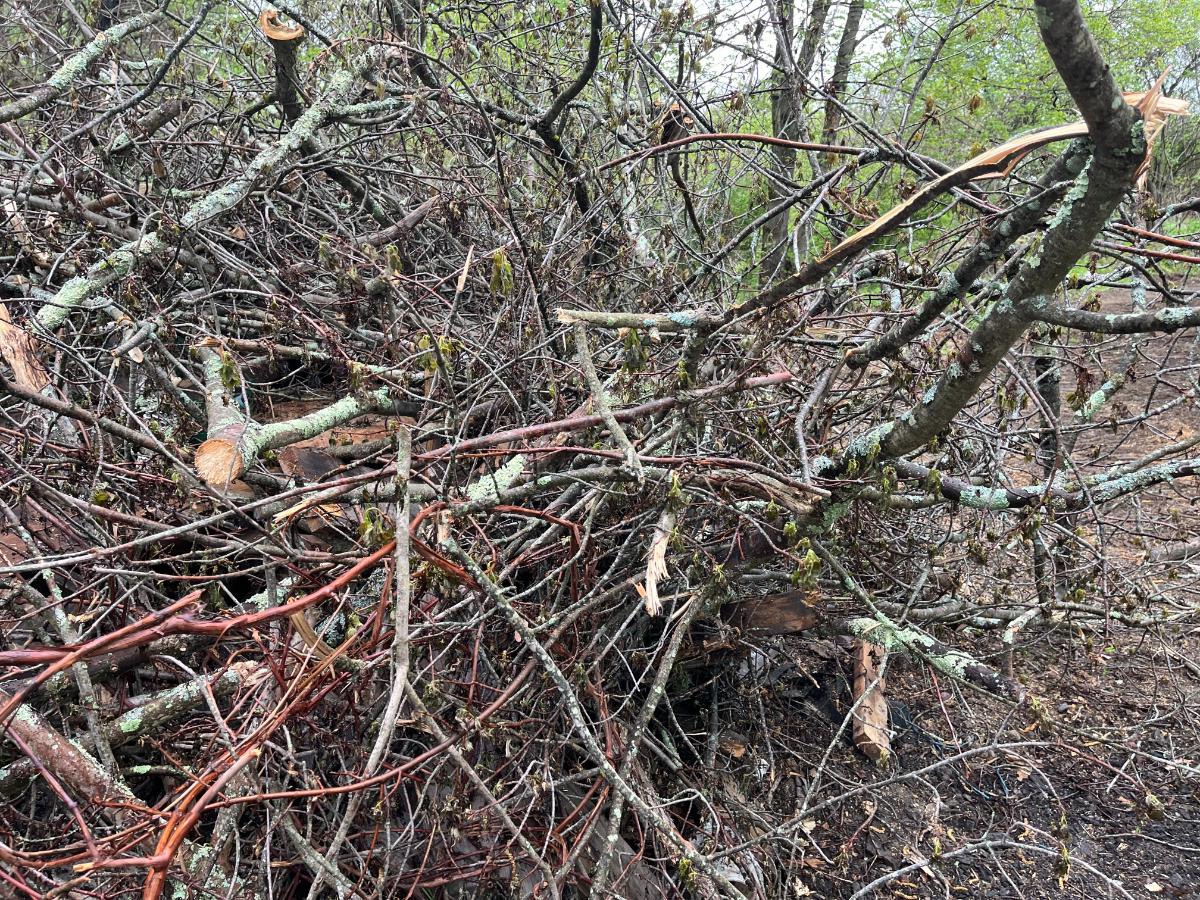
Raised beds are a great place to use all those trimmed and fallen branches in your yard. Set aside a stack when you do your spring cleaning.
Branches and sticks make a good second layer above logs and cordwood pieces. If you feel that leaves too much air space, you can fill in between with something smaller from the list below.
Save the best soil for the top, but a light layer of compost, leaves, or lower quality soil will help fill in gaps between large pieces of filler. This is a good place to use clay or sandy soils because as the wood breaks down, it will blend together to make a better soil for deep roots and growing later on.
4. Leaves
Leaves from yard cleanup (spring or fall) are the perfect raised bed fillers. They are light, break down into valuable, nutrient-rich hummus, retain moisture, and work well in the soil to keep its structure one that is ideal for planting (think about how rich life is on a forest floor!).
And if you have deciduous trees in your yard, you’ll have a ready supply!
5. Yard Waste/Cleanup
Other types of yard waste make ideal raised bed fillers, too. Grass clippings from mowing, and anything in general that came from nature and was trimmed or fell into your yard makes a good filler and space-taker.
Raised beds are a great place to “hide” your waste and make it useful!
6. Plant Remnants
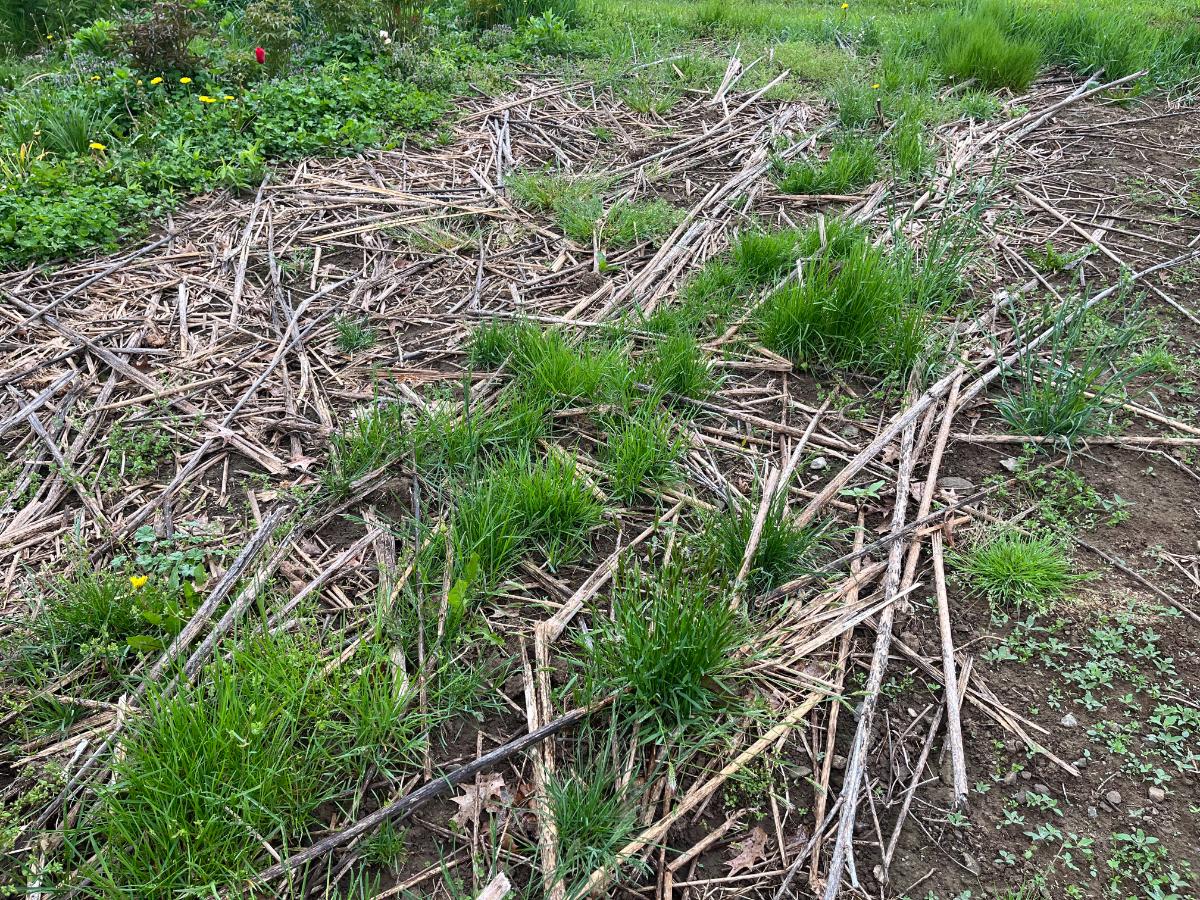
Stalks and vines of last year’s garden plants do a good job of taking up space in a raised bed. As long as they died of natural causes and weren’t a big source of garden disease, they’ll be perfect for filling the lower and middle levels of your raised bed.
Some good candidates include:
- corn stalks
- sunflower stalks
- trimmed and pruned flower stalks
- stalks from perennial grasses and ornamentals
- squash, pumpkin, and cucumber vines
- stalks from large vegetables like asparagus, tomatoes, kale and broccoli
These all work well. They return a lot of the nutrients that they used from the soil to the soil as they break down.
This is a good way to get rid of some large garden waste that otherwise can take a long time to decompose in compost piles and may be a bit harder to deal with as an annual waste product.
These lighter, more pliable stalks and vines are a good buffer between logs and woody layers and smaller filler and/or soil.
7. Compost

Compost, of course, is an excellent filler for a raised bed. You can use it as its own layer, but it’s also perfect for mixing into soil.
Compost adds nutrients, improves moisture retention and release, and adds structure that can expand and contract. This is important to help keep air in the soil, which is important for root health and plant growth.
8. Wood Chip
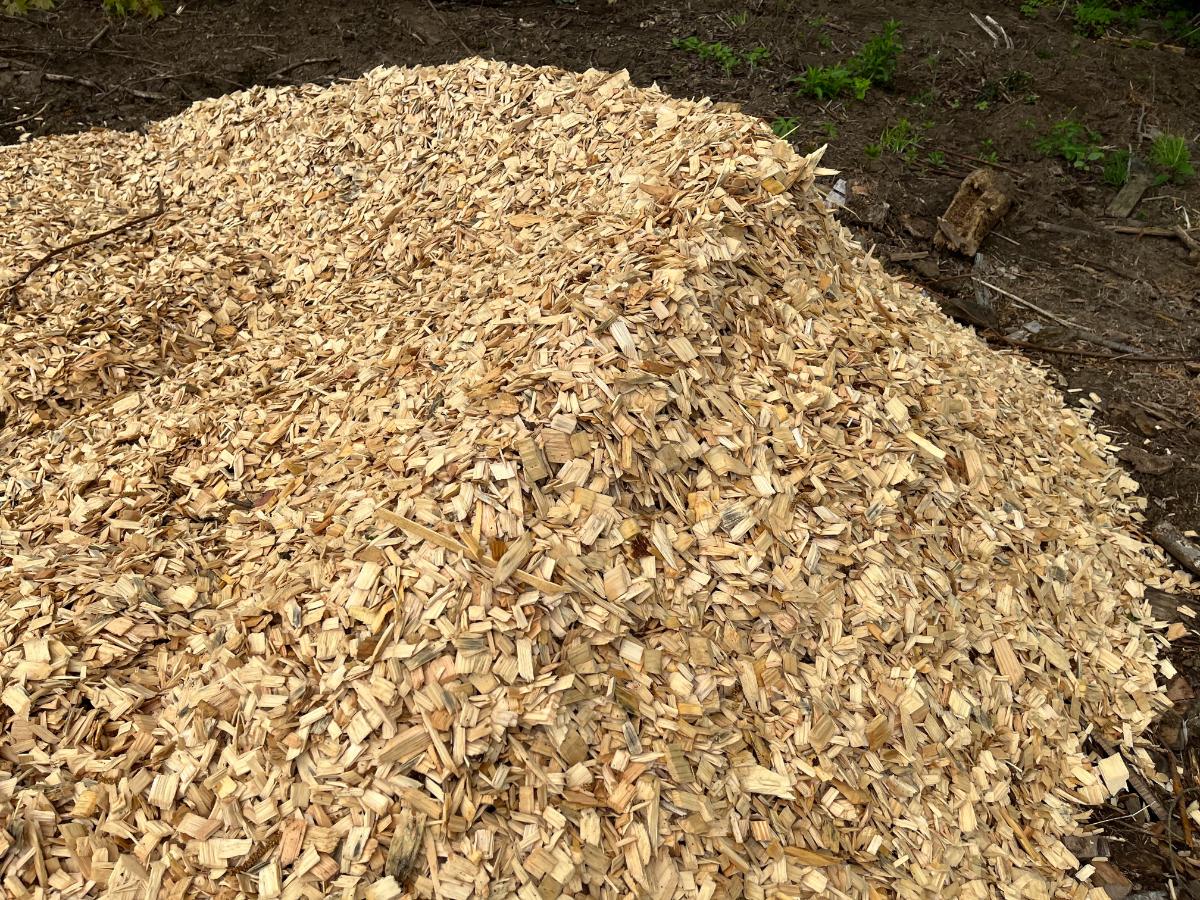
Wood chips are good as a lower-level filler. A good place to use them is above large logs, because they are smaller and can break down and fill in gaps.
If you are removing old wood mulch from somewhere else in your lawn, or if you’ve chipped brush to get rid of it, this is a good way to use it. Like punky wood, it is also good at absorbing and releasing moisture in the raised bed.
9. Straw, Mulch Hay, and Old Garden Mulches

If you have old, spent mulch that you are removing from anywhere in your yard or garden, give it a good second life as a filler in your raised beds.
You can do the same with bales of mulch hay (which are generally cheaper than soil even if you have to buy them) or bales of hay or mulch that you may have decorated with last fall – as long as it’s untreated and it is real hay or straw.
If you are concerned that mulch hay may have seed in it, leave the bale out in the rain and sun for a couple of weeks before you use it. (If it doesn’t rain, wet the bale.)
This should give the seed in the bale a chance to sprout. You can then break the bale, disturb the sprouts, and bury them deep in the soil, where they will be deprived of the light and air they need to grow.
10. Old, Used Potting Soil
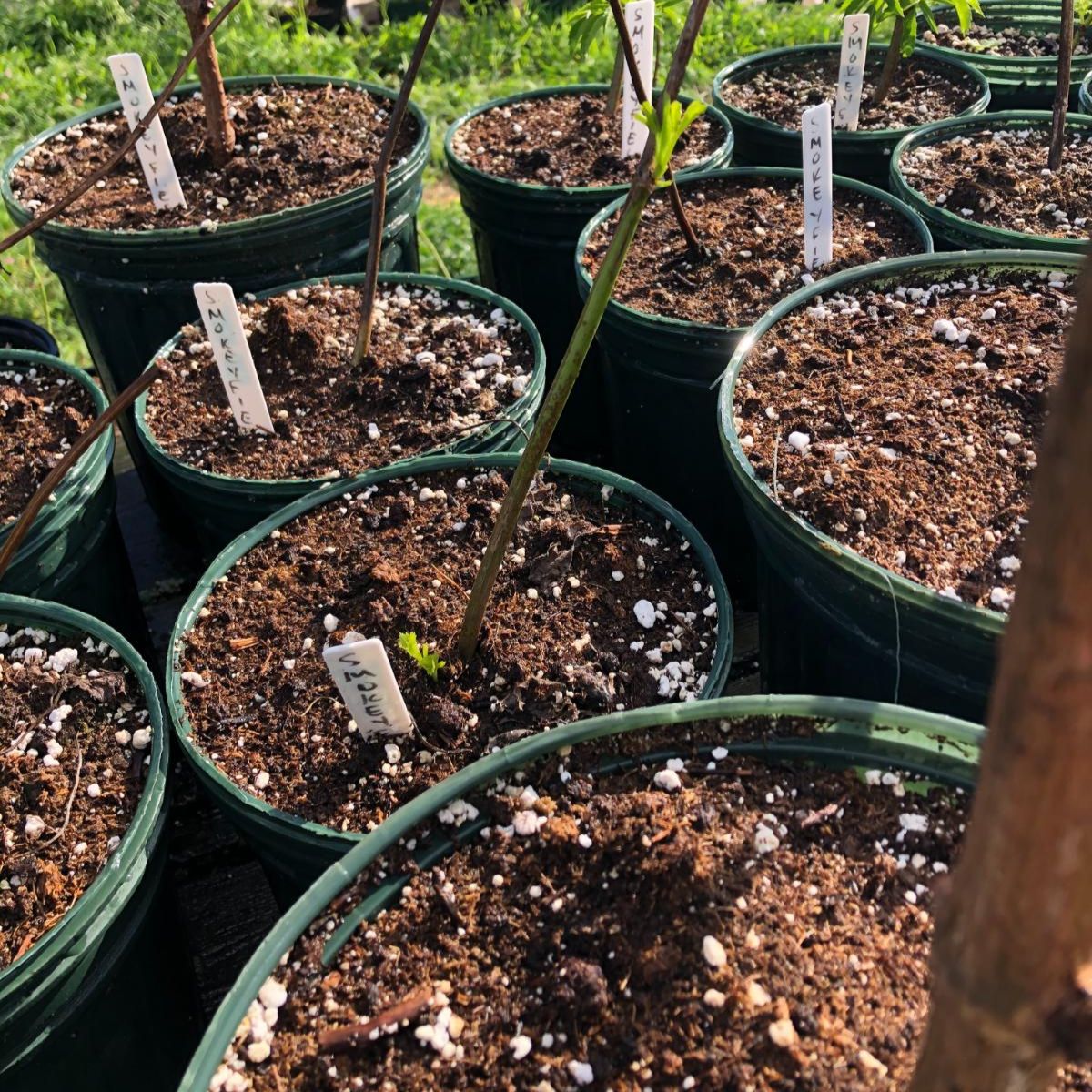
Your raised bed is the perfect place to dispose of and reuse old potting soil. This soil will become part of your soil layer.
Mix the spent potting soil in with the rest of your raised bed soil, and you won’t need to worry about the fact that the potting soil has little or no nutrient value left to it – you should have plenty in the soil you add; and more coming from the natural materials that are breaking down and feeding your soil.
The big advantage to using potting soil in raised beds is that in years to come, as your soil settles, you can easily dump it on top to help refill your beds. Some of the other fillers on this list only really work well for new or renovated beds that you’re filling from the bottom up because they need to be used in the bottom and middle layers.
But that’s not the case with potting soil – so don’t dump or throw that away when your container plants are finished for the year!
Other Home, Yard, and Garden Materials that Make Good Bed Fillers:
- Shredded paper
- Old Wrapping paper (not glossy or glittered – see more here: 11 Ways To Make Wrapping & Gift Giving Greener )
- Packing paper
- Pine needles
- Foraged forest debris and leaves
- Food scraps (buried below soil)
- Shavings from animal bedding
- Composted animal manure, such as cow, horse, or chicken
- “Cold” manure straight from animal pens, like rabbits
Tips for Filling Raised Beds with Little or No Money
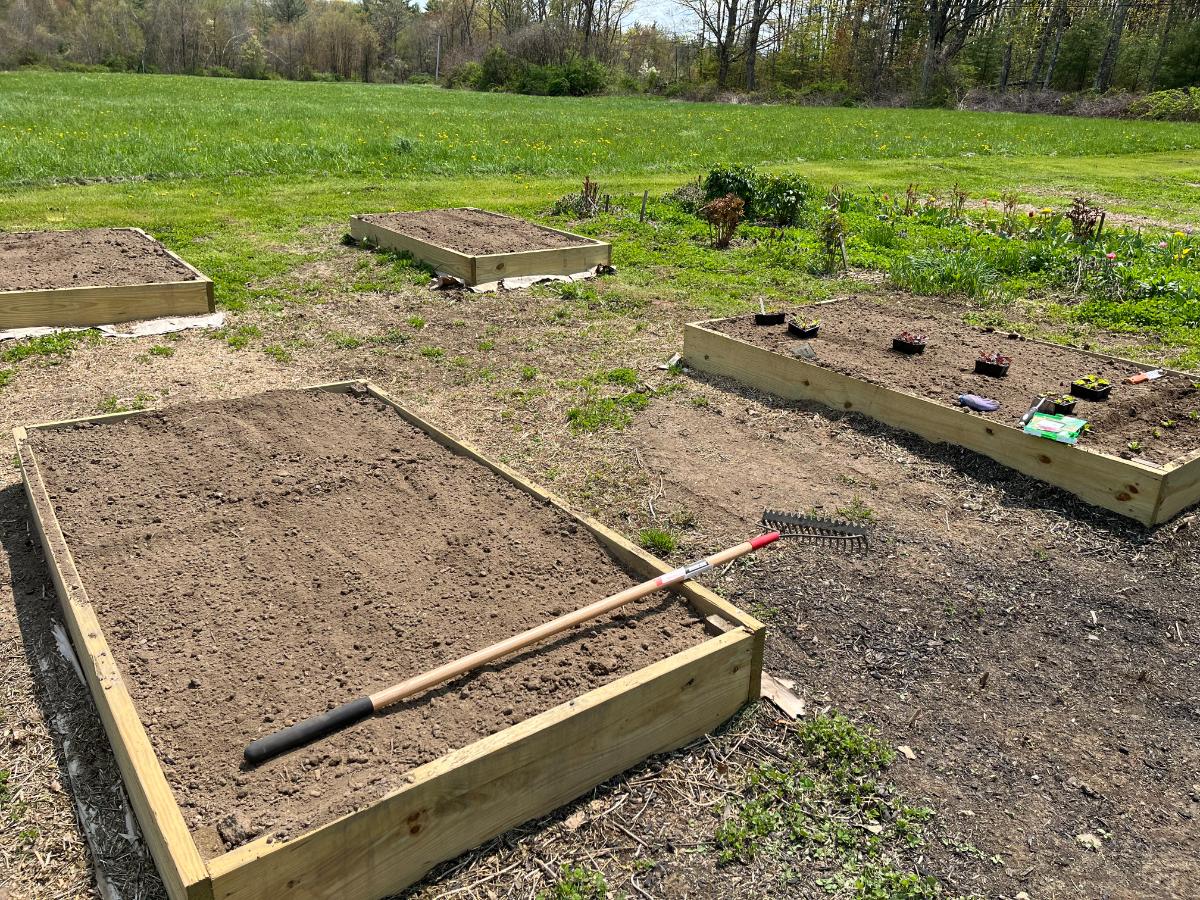
- If you don’t have enough of your own cheap or free yard refuse, ask friends or neighbors – if they’re not using it, they’re usually more than happy to let you take it away!
- Place your materials in the bottom of the bed to take up space; the soil is for the top, where plants will grow
- Don't worry too much about nitrogen depletion; the process of tying up nitrogen is slow and will occur below the soil line
- Nitrogen is only borrowed and will return to the soil after the breakdown phase
- If you are concerned, a boost of nitrogen fertilizer will help but be careful not to overdo it
- Any materials that you would use in a hügelkultur or lasagna garden bed will work well as a raised bed filler in a similar fashion!
- Top with a solid layer of soil at least 12 and preferably 18 or 24+ inches deep – this will give even the longest-rooted plants plenty of soil to work with
- Don't use shiny or waxy-coated papers of any kind
- The cardboard should not be shiny or waxy printed or coated
- Remove tape and labels from cardboard before using
- Lay cardboard in a thick layer on the bed’s bottom, and it will act as a grass and weed blocker, too (because you will be amazed at what some tenacious grass and weeds can poke up through!)
- After a cardboard weed-blocking bottom, start with the biggest, thickest materials
- Work from largest to smallest
- Logs and wood should be on the bottom, and then work down in size until the soil is your topmost layer
- Any “green” materials should be dried before being put into the bed
- Let old plant stalks, pruning stalks, cuttings, and grasses dry out completely before adding to the bed
- Many of these items are much cheaper than soil by volume, so even if you have to buy some materials, you’re still likely to save money
- Some towns and cities have yard waste collections, and you may be able to get cheap or free compost, chips, or yard waste from these programs
- Some tree companies and towns will also “chip drop” materials for free – it's cheaper for them than hauling them away and paying to dump them at a disposal site!
- Put the word out that you’re looking for “clean fill” or clean yard waste – you may be surprised at how much you can collect just by letting people know you are a willing place for them to dispose of their unwanted yard waste!
For those years when you aren’t filling a new raised bed, there are other good ways to put yard and garden waste and debris from clean-up to good use for you. Check out these ideas here: 10 Ways To Reuse Spring Cleanup Yard Waste

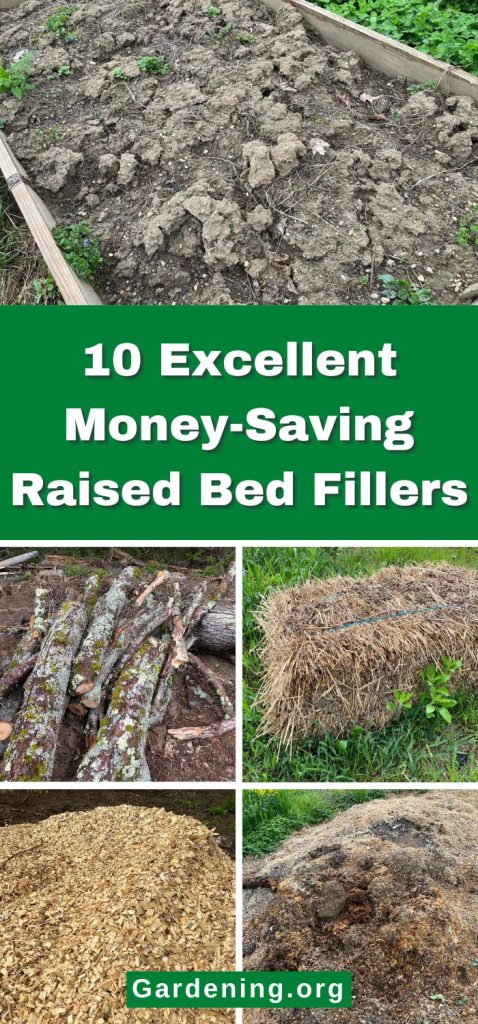
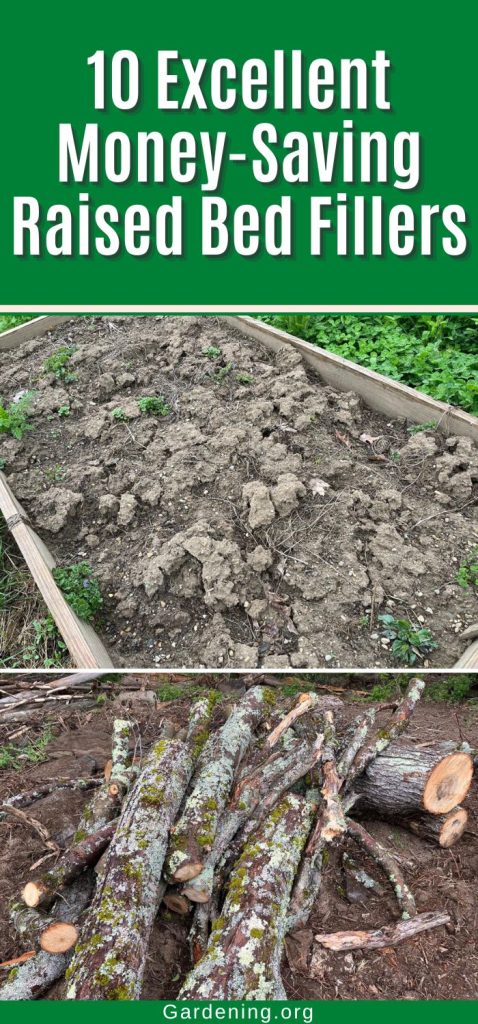
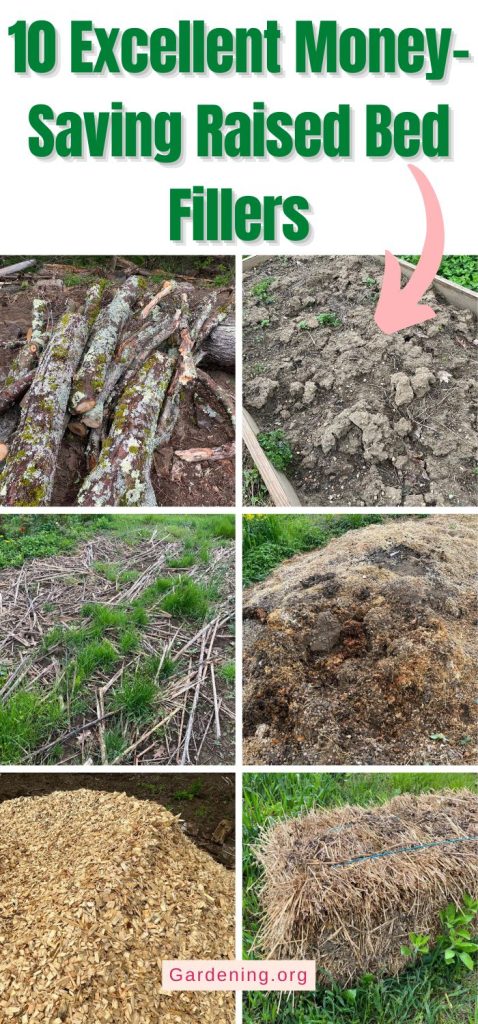
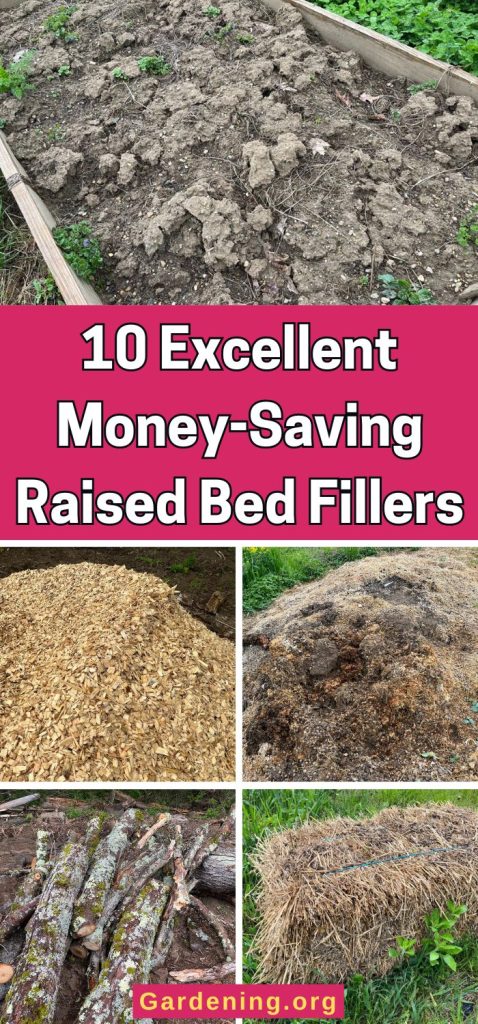




Mary Coakley
I read with great.interest.your.fillers for.raised.beds.and learned so much.Thanks